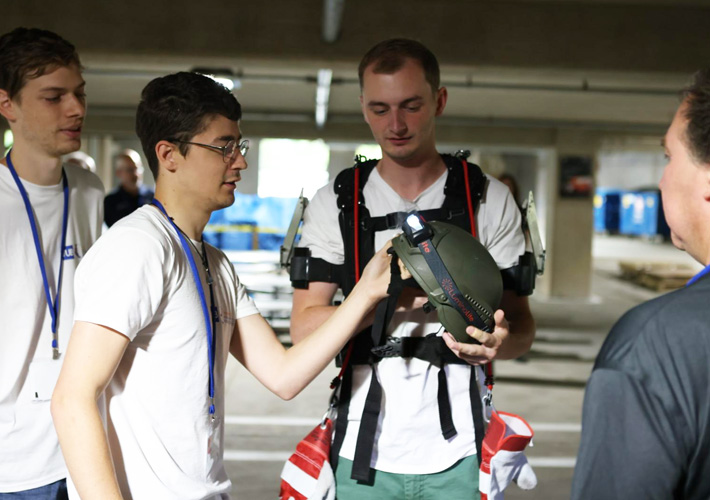
First Responder-Focused Exo Games Brings Students and Experts Together – Podcast
Exoskeletons have high potential to support first responders, including reducing pain or risk of injury for those who work in fields like fire response, bomb disposal, and other critical areas of public safety. With the goal of supporting people on the front line, ASTM International’s 2024 Exo Games brought together students, subject experts, and former first responders to test exoskeletons and discuss how to make them better.
Standards Impact podcast host JP Ervin was on the ground at the Exo Games, speaking to event organizers and students about their experiences. The episode features interviews with ASTM’s William Billotte, Ann Virts, an expert in exoskeletons and robotics from the National Institute of Standards and Technology (NIST), and Yash Seetal, a student at University of Central Lancashire who is competing in the Games.
NEVER MISS AN EPISODE: Follow Standards Impact on Spotify
Read a short excerpt from the interview with Virts below. And to learn more about the Exo Games and the fascinating world of first responder exos, listen to the full episode.
JP Ervin: I'm here with Ann Virts, project leader of mobility performance of robotic systems with NIST. Can you tell me a bit about yourself and your areas of specialty?
Ann Virts: Absolutely. I've worked at NIST for 35 years. My expertise is developing standard test methods for exoskeletons, for autonomous vehicles, for urban search and rescue bomb disposal robots. And I've been doing that the majority of my career.
Ervin: What do you hope to accomplish with the EXO games in terms of what it brings to the students or the exo world?
Virts: A couple different things. Of course, bringing some real-world applications into the games. For example, we have a fire overhaul test. It's the actual test that new recruits use at the station before they're accepted into the academy. Having an understanding of what a firefighter has to go through when they are becoming a cadet. Just that real world aspect, getting out of the laboratory, because lot of these systems, they've only done very little testing and on objects that might not be relevant to the domain of public safety.
Ervin: Can you tell me a bit about what you see as potential applications for exo technology in areas like public safety?
Virts: Absolutely. We're at the infancy. We are just starting down this very long path, and the best thing that we can do is get the subject matter experts involved at the beginning, understanding their requirements so that manufacturers are designing and developing exoskeletons for their particular domain. Because what works in industry for a car assembly plant will not work for a first responder. It's a different application. It's not a one-fit-all model. Having the subject matter experts at the beginning helping the design process, the development process, and using standard test methods in which to validate those products, it’s just awesome. We've got subject matter experts here. We've got retired, bomb squad, retired fire battalion chief. We have a gentleman who was with the Rangers. He was also SWAT. They will be able to give these students a lot of feedback on their devices, a lot of real-world scenarios of what they experienced and how now 35 years, 40 years past their prime, what these exoskeletons could have done for them to save their bodies, their joints, et cetera. Because now they're living with the pain. They did not have the support systems like the younger folks that are coming into public safety domain.
Ervin: Why standards? What do standards bring to that kind of equation? When we're in this infancy period, as you describe it?
Virts: It levels the playing field. You have different manufacturers developing exoskeletons, robotic systems, whatever it is, and you need to test against something. Everybody is testing in a standardized way. Let's say you as the consumer, you're interested in purchasing a device, you go out, you've got five exoskeletons you're interested in, you send them through a suite of test methods because one test method does not determine how applicable that particular exo is for the demand. You have to do a wide breadth of test methods, and it would help you make an educated purchasing decision. The test methods can also be used for training. You've got a brand new exoskeleton, how do you know that your training each employee exactly the same? You can use standards for training as well.
Learn more about Standards Impact on our Buzzsprout page or wherever you get your podcasts.
 SN Home
SN Home Archive
Archive Advertisers
Advertisers Masthead
Masthead RateCard
RateCard Subscribe
Subscribe Email Editor
Email Editor